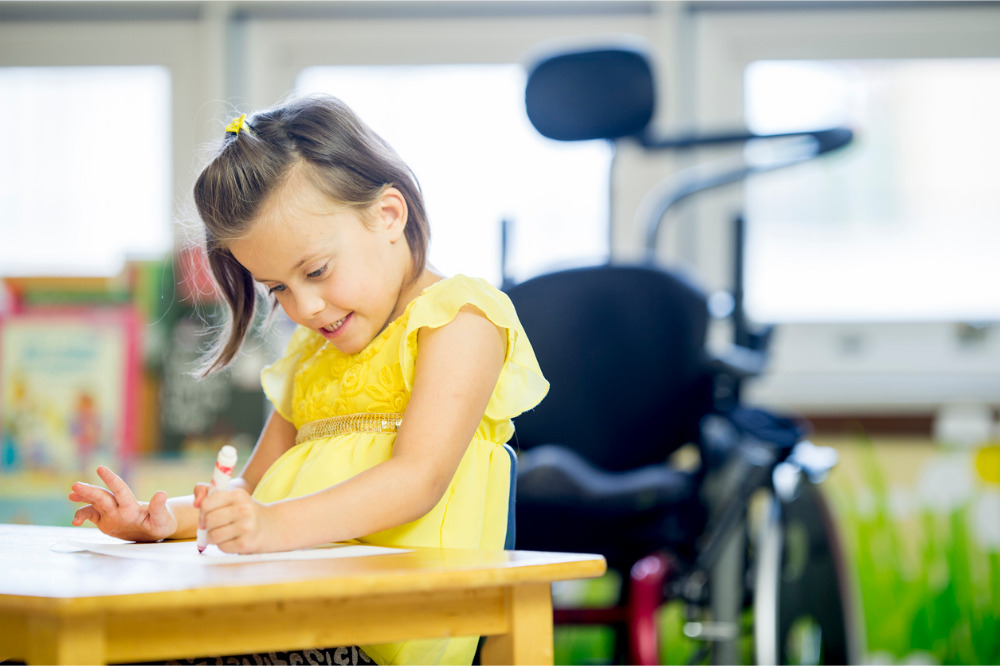
In NSW, the overwhelming majority of students with disability (86%) learn in mainstream classrooms, while Schools for Specific Purposes (SSPs) educate around 3% of students with disability.
To ensure the state’s schools remain inclusive for children with a disability, the NSW Government recently released its Inclusive Education Policy, which will be implemented from Term 3, 2022.
The new Policy outlines that inclusive education means “that all students, regardless of disability, ethnicity, socio-economic status, nationality, language, gender, sexual orientation or faith, can access and fully participate in learning, alongside their similar aged peers, supported by reasonable adjustments and teaching strategies tailored to meet their individual approved needs.
In all schools, including Schools for Specific Purposes (SSPs), the NESA curriculum is followed, and in the case of SSPs, the delivery is tailored to meet the individual needs of students with disabilities.
Family Advocacy has been one of the lead organisations seeking the Inclusive Education Policy’s development, says the authentic inclusion of students with disability across NSW schools “continues to be a hit and miss experience for many students, often with lifelong negative consequences.”
The group says the definition of inclusive education needs to be in alignment with the United Nations Convention on the Rights of Persons with Disabilities.
“What is key about this definition is that it defines not only what inclusive education is, but what it is not; Under this definition, being in a special school or support unit is certainly not inclusion, but rather segregation,” Cecile Sullivan Elder, Family Advocacy’s Executive Officer, said.
Under The Disability Standards for Education under the Commonwealth Disability Discrimination Act 1992, a school must “take reasonable steps to ensure the student is able to seek admission or apply for enrolment on the same basis as a student without a disability, and without experiencing discrimination.”
A school must also ensure the student is treated on the same basis as other students when the decision is made on whether to offer the student a place in the school, or a particular course or program applied for.
The NSW Department of Education insists its new Inclusive Education Policy is fit for purpose when it comes to ensuring that school environments and practices are inclusive for children with a disability.
“Under the Disability Standards for Education 2005, all principals and teachers have legal obligations to ensure students with disability can access and participate in education on the same basis as other students,” a spokesperson for NSW Education told The Educator.
“The Department’s new Inclusive Education Policy clarifies the rights of students and their families as well as the roles and responsibilities of staff.”
The new Policy outlines that inclusive education means “that all students, regardless of disability, ethnicity, socio-economic status, nationality, language, gender, sexual orientation or faith, can access and fully participate in learning, alongside their similar aged peers, supported by reasonable adjustments and teaching strategies tailored to meet their individual approved needs.”
“Inclusion is embedded in all aspects of school life, and is supported by culture, policies and everyday practices,” the spokesperson said.
“In all schools, including Schools for Specific Purposes [SSPs], the NESA curriculum is followed. In SSPs the delivery is tailored to meet the individual needs of students with disabilities.”
Still, disability advocacy groups are urging the government to heed research which shows that, when included in mainstream education, children with a disability thrive in their learning.
Indeed, one of the recommendations by the NSW parliamentary inquiry into the education of children with disabilities was that all children should be included in mainstream education as a default.
“Rather than having the effect of moving more children with disability into regular classes, this inclusive education policy will promote and expand the numbers of students in support units and special schools,” Elder told The Educator.
“The life impact of this segregated education leads to isolation from the general school population and a higher chance of continued segregation into adulthood such as attendance at Australian Disability Enterprises and Day Services.”


